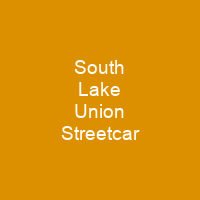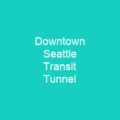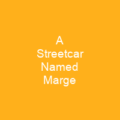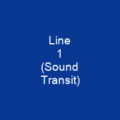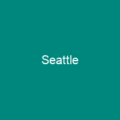The South Lake Union Streetcar was the first modern line to operate in Seattle. It began service on December 12, 2007, two years after a separate heritage streetcar ceased operations. The line is popularly known by its nickname, the South LakeUnion Trolley, which is used on unofficial merchandise sold by local businesses. A planned streetcar project to connect the line with the First Hill Line via Downtown Seattle was placed on hold in 2018.
About South Lake Union Streetcar in brief
 The South Lake Union Streetcar was the first modern line to operate in Seattle. It began service on December 12, 2007, two years after a separate heritage streetcar ceased operations. The streetcar line was conceived as part of the redevelopment of South Lake union into a technology hub. The line is popularly known by its nickname, the South LakeUnion Trolley, which is used on unofficial merchandise sold by local businesses. A planned streetcar project to connect the line with the First Hill Line via Downtown Seattle was placed on hold by the city government in 2018. The first electric streetcar to run along Westlake Avenue was operated by the Seattle Electric Railway and Power Company and opened five days after the company was awarded the city’s first streetcar franchise in October 1890. The Westlake streetcar line continued north from Downtown Seattle to the Fremont Bridge and was privately operated until being acquired by theCity of Seattle in 1918. A heritage streetcar line along Alaskan Way ceased operations in 2005. Restoration of streetcar service within the city was proposed in the 1990s to complement the planned light rail network put forward by Sound Transit and a proposed municipal monorail system. One streetcar proposal from Mayor Paul Schell in 1998 included re-routing a surface light rail line between downtown and the University District. The proposed 2.5-mile streetcar would travel from the Fred Hutchinson Cancer Research Center to the Westlake Center, where it would connect to the Seattle Center Monorail, buses, and light rail trains. The city council approved a redevelopment plan for South Lake.
The South Lake Union Streetcar was the first modern line to operate in Seattle. It began service on December 12, 2007, two years after a separate heritage streetcar ceased operations. The streetcar line was conceived as part of the redevelopment of South Lake union into a technology hub. The line is popularly known by its nickname, the South LakeUnion Trolley, which is used on unofficial merchandise sold by local businesses. A planned streetcar project to connect the line with the First Hill Line via Downtown Seattle was placed on hold by the city government in 2018. The first electric streetcar to run along Westlake Avenue was operated by the Seattle Electric Railway and Power Company and opened five days after the company was awarded the city’s first streetcar franchise in October 1890. The Westlake streetcar line continued north from Downtown Seattle to the Fremont Bridge and was privately operated until being acquired by theCity of Seattle in 1918. A heritage streetcar line along Alaskan Way ceased operations in 2005. Restoration of streetcar service within the city was proposed in the 1990s to complement the planned light rail network put forward by Sound Transit and a proposed municipal monorail system. One streetcar proposal from Mayor Paul Schell in 1998 included re-routing a surface light rail line between downtown and the University District. The proposed 2.5-mile streetcar would travel from the Fred Hutchinson Cancer Research Center to the Westlake Center, where it would connect to the Seattle Center Monorail, buses, and light rail trains. The city council approved a redevelopment plan for South Lake.
Union to accommodate biotechnology and biomedical research in June 2003, but chose to defer the streetcar issue until funding sources were identified and approved. In April 2004, the city council released USD 2. 4 million in state and federal funds for the project’s design and engineering; this was increased by an additional 4. 3 million by the Puget Sound Regional Council in April 2005. Despite a city analysis of the plan finding it to have risks and overstated ridership, the streetcar project was endorsed by the full transportation committee and sent to the full council for a vote for a full vote in 2016. The project was approved by the council in April 2016 and double its ridership by 2016. It was completed over a year later by the City of Seattle, with operation and maintenance contracted out to King County Metro. It is the only streetcar line in Seattle that is not owned and operated by a private company. It has a total capacity of 1.3 miles (1.6 km) and is the second longest line in the Seattle Streetcar system. It connects Downtown Seattle with the South. Lake Union neighborhood on Westlake Ave, Terry Avenue, and Valley Street. It opened in 2007 and was funded using a combination of contributions from local property owners, the. city government, and grants from the state andFederal government. The streetcar was controversial in its first few years due to its slow speed, low ridership and public funding, and connections to real estate development. In 2013, ridership has declined since peaking in 2013.
You want to know more about South Lake Union Streetcar?
This page is based on the article South Lake Union Streetcar published in Wikipedia (as of Dec. 07, 2020) and was automatically summarized using artificial intelligence.
